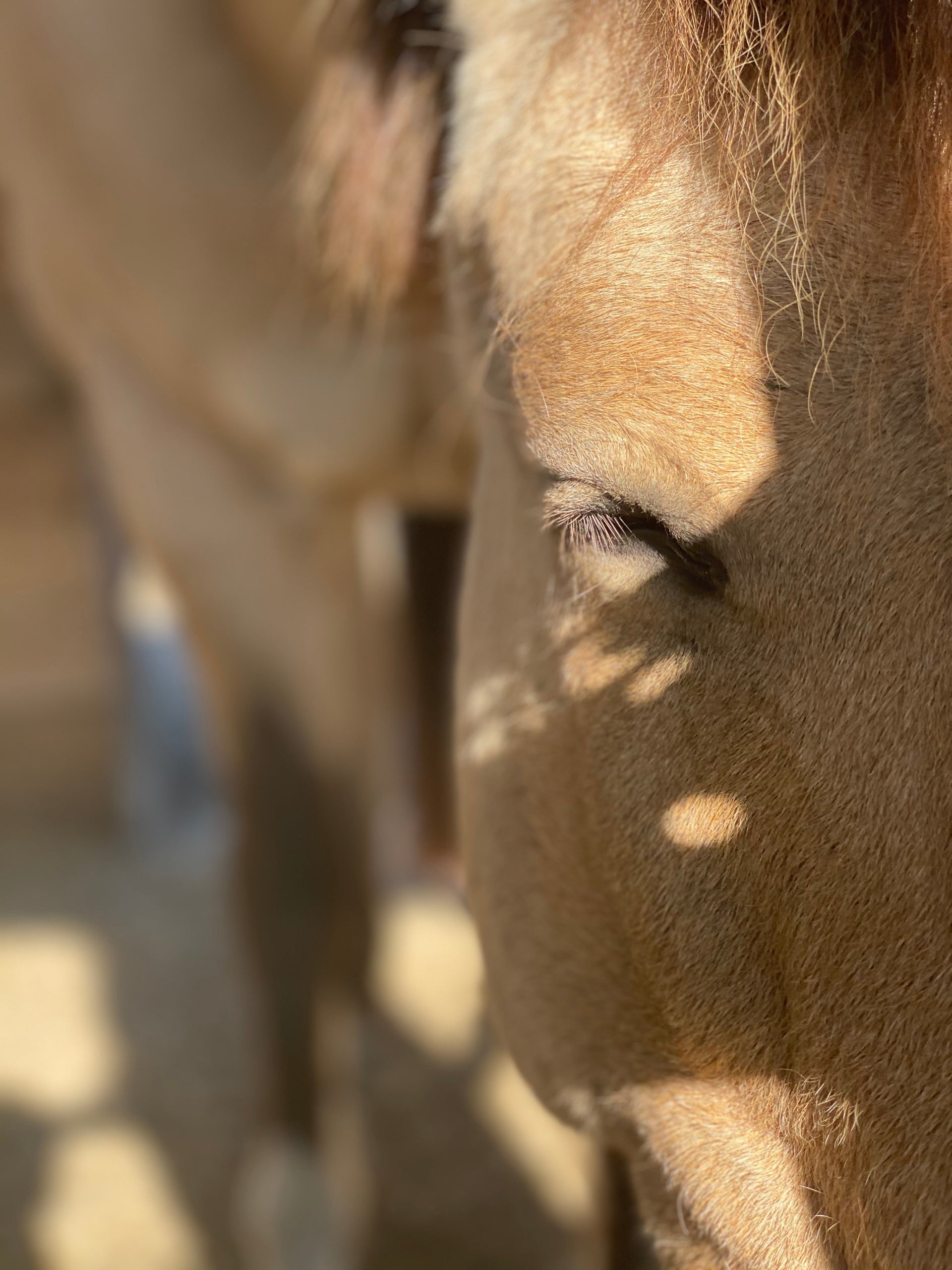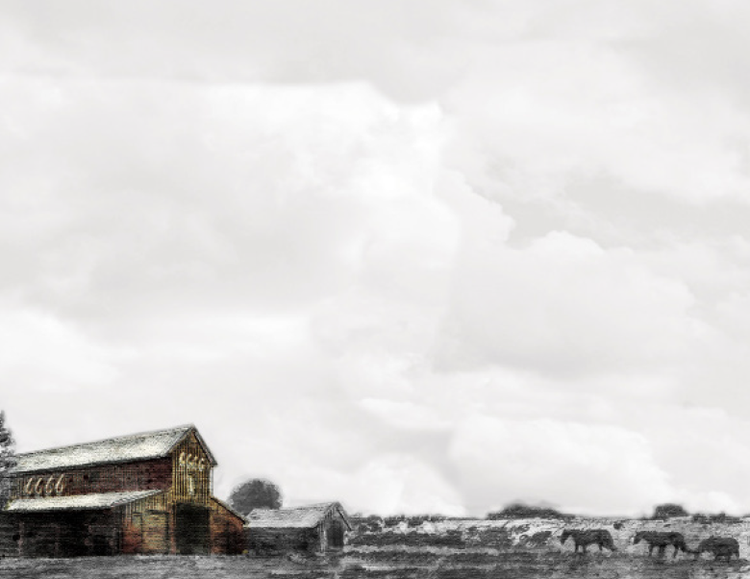*It is important to mention that hindgut ulcers are still being investigated, and much remains to be determined regarding diagnosis, treatment, and digestive support. For the purposes of this article, we will discuss what we do know.
Ulcers are not a foreign word to most horse owners. The word ulcer refers to a lesion in the lining of the GI tract, and the severity can vary from mild inflammation to serious, painful wounds.
This is because ulcers in horses are incredibly common and can occur for a laundry list of reasons.
However, there are two different types of ulcers: Equine gastric ulcers and hindgut, or colonic, ulcers.
Not only do these types of ulcers form in different parts of the horse’s digestive system, but they also come with their own set of clinical symptoms, diagnoses, and treatment options.
At a high level, here is what you need to know about equine gastrointestinal ulcers and how to help identify if your horse might be at risk — or if they might have them already.
An Overview of the Horse's Digestive System
First, it’s important to understand how a horse’s digestive system works overall to know how, where, and why ulcers can form.
Even compared to other herbivores, a horse’s digestive system is very unique. This is because much of the forage they consume is digested in a portion of their digestive tract that is further down their digestive system. This type of digestive process classifies horses as hind-gut fermenters.
Before feed leaves a horse’s mouth, it is chewed, and begins to be broken down by their saliva, which has enzymes and bicarbonate that help buffer the horse’s highly acidic stomach.
Once feed reaches the horse's surprisingly small stomach (it’s about 2-4 gallons in size and only makes up about 10% of the total digestive system!), it mixes with stomach acid, which begins to break down particles of protein into smaller peptides.
After exiting the stomach, feed reaches the small intestine, which is where most digestion and nutrient absorption occurs. Here, starches (non-structural carbohydrates), proteins, and fats are broken down further by digestive enzymes from the pancreas and small intestine, and then absorbed through the enterocyte cells of the small intestine in the GI tract.
Finally, any remaining feed, typically structural carbohydrates from forage (the fibrous part of the plant), make it to the hindgut. This is the largest part of a horse’s digestive system (making up 60-70% of the GI tract!) and made up of the cecum, colon, and the rectum. Fiber is digested here through microbial processes. In other words, the microbiome gets to work!
Through microbial fermentation, small fatty acids and other nutrients are produced and absorbed as an energy source for the horse. This is why the population of good bacteria that populate the horse’s hindgut (i.e. the microbiome) is so critical to your horse’s wellbeing. The horse relies on these microbes for the digestion of fiber, so it is important to support these microbes in staying balanced and healthy.
Gastric vs. Hindgut Ulcers
Now that we’ve covered the horse’s digestive tract, it’s easier to grasp that the main difference between gastric and hindgut is simple: Location.
Hindgut ulcers occur in the hindgut, specifically in the large colon, while gastric ulcers occur in the stomach.
In addition to, and because of their location, they are also acquired differently.
Gastric ulcers in horses often result from modern day management decisions, such as unintentional forage restriction in between meals, large high-concentrate grain diets, and intense training, stress, and illness.
Some of the early signs of gastric ulcers are irritability, poor athletic performance, ‘cinchiness,’ refusing grain meals, and low grade recurrent colic. However, many horses show no outward signs of gastric ulcers, and the owner or trainer must be attuned enough to recognize slight shifts.
If gastric ulcers are left untreated they may become more severe, and the above signs can become more serious as the horse’s level of discomfort increases. Not only can this lead to an even greater decline in athletic performance and behavioral issues, the horse’s overall body condition may drop as appetite suffers, and colic signs may become more frequent and painful.
In some cases, there is a similarity in how both types of ulcers are caused, such as the horse being on a high grain/low forage diet or because of stressful situations. For hindgut ulcers, specifically, the overuse of non-steroidal anti-inflammatory drugs (NSAIDs) and internal parasite infestations are also believed to be risk factors.
Some of the symptoms of hindgut ulcers in horses can be similar to gastric ulcers, and include:
- Lethargy
- Dull hair coat
- Poor appetite, not necessarily specific to grain meals
- Sensitivity in the flank area
- Difficulty with collecting, extending, and bending, especially while under saddle
Unfortunately, due to their location and being unable to get a scope into the hindgut to take images, hindgut ulcers are impossible to diagnose compared to gastric ulcers.
Veterinarians will typically diagnose according to symptoms the horse is presenting, along with fecal occult blood tests — although these tests are not definitive.
The only definitive diagnosis for hindgut ulcers is a transabdominal ultrasound. However, this requires the vet to have specialized equipment, and still may not be conclusive. In general, if the colon wall appears thickened, hindgut ulcers may be diagnosed, even if no obvious lesions are detected.
Treating Hindgut Ulcers in Horses
When treating hindgut ulcers, veterinarians will often recommend feeding more frequent, small grain meals versus less-frequent, large meals, adding long-stem alfalfa hay which has a buffering aspect to it, and supplementing with a high-quality probiotic.
Deworming to treat any active internal parasite infestations, as well as using a judicious deworming protocol 1-2 times per year around the start and end of grazing season, and in accordance with fecal egg count testing, is also recommended.
Once treated, managing the horse’s stress is an important component of reducing the risk of recurrence.
Additionally, sticking with a feed program that is more conducive to the horse’s overall digestive system health is always important. This includes feeding hay before grain, offering access to free-choice long-stem forage, and splitting up large grain portions into two or three throughout the day.
Supplements to Support Equine Gut Health
While equine supplements will not treat hindgut or gastric ulcers, they can help balance a horse’s gastrointestinal tract, and help support a healthy GI environment.
The Four Sixes Complete Gut Protection includes an optimal balance of prebiotics, postbiotics, and probiotics designed to support equine GI health. When the horse’s gut is functioning properly, serious problems are less likely to take effect.
Developed by the nation’s leading equine nutritionists and veterinarians, Complete Gut Protection includes ingredients such as superpowered Saccharomyces boulardii, oat beta glucan, postbiotics, and L-glutamine.
This gut supplement provides fuel for beneficial gut bacteria, supports the layers of the GI tract, and supports a balanced gut microbiome overall.
Ideal for supporting a healthy GI tract, from stomach to hindgut, this daily supplement is especially useful for horses that undergo stressful situations like travel, heavy training, and competition. It’s also a great option for any horse who is prone to GI upset.



